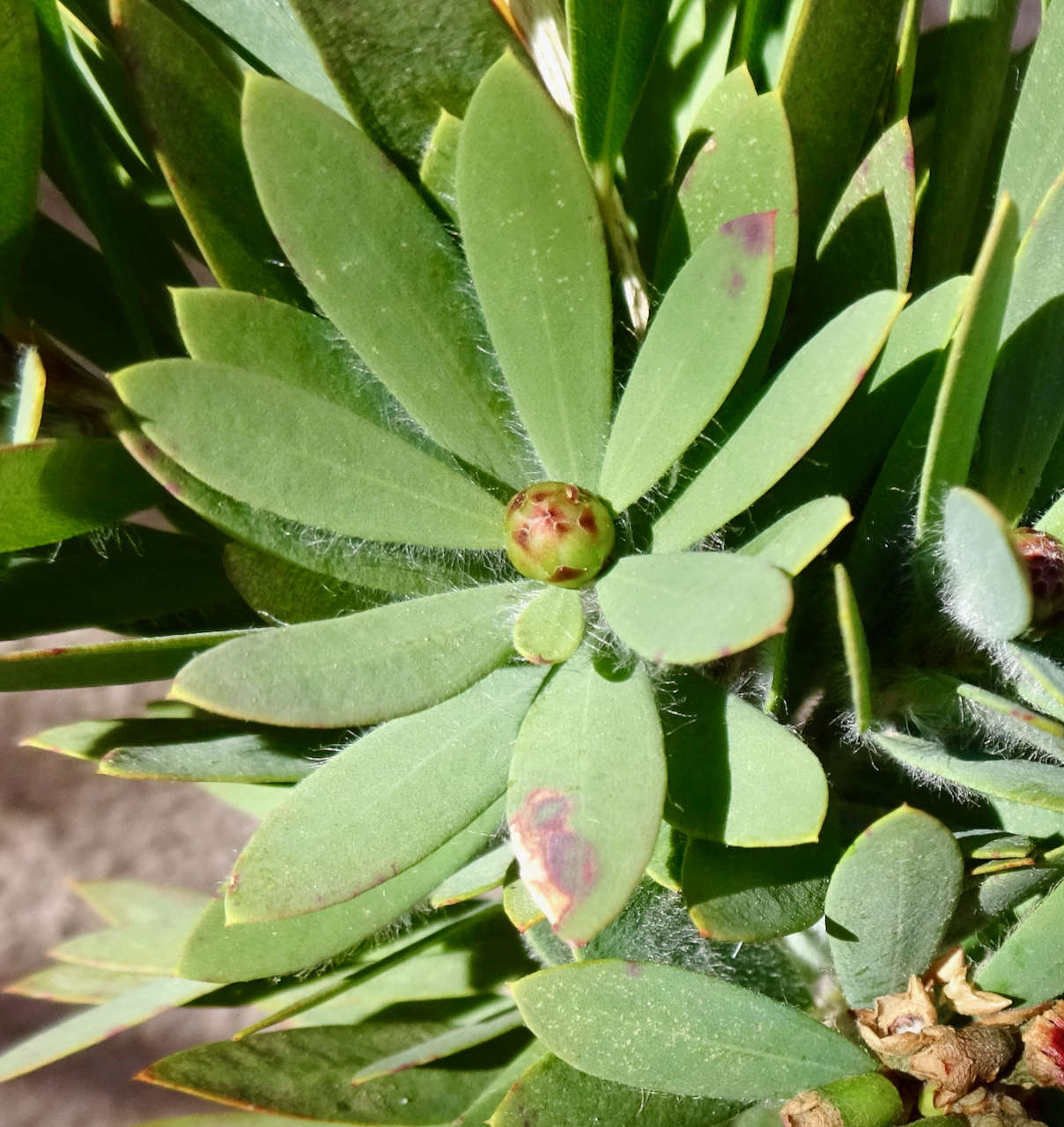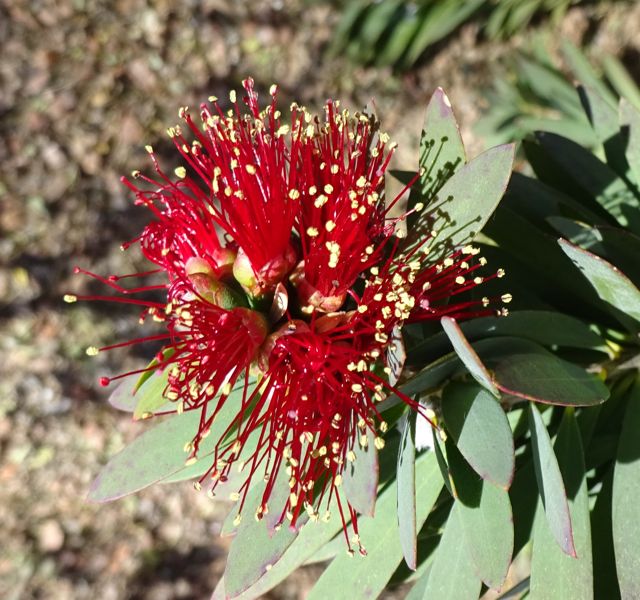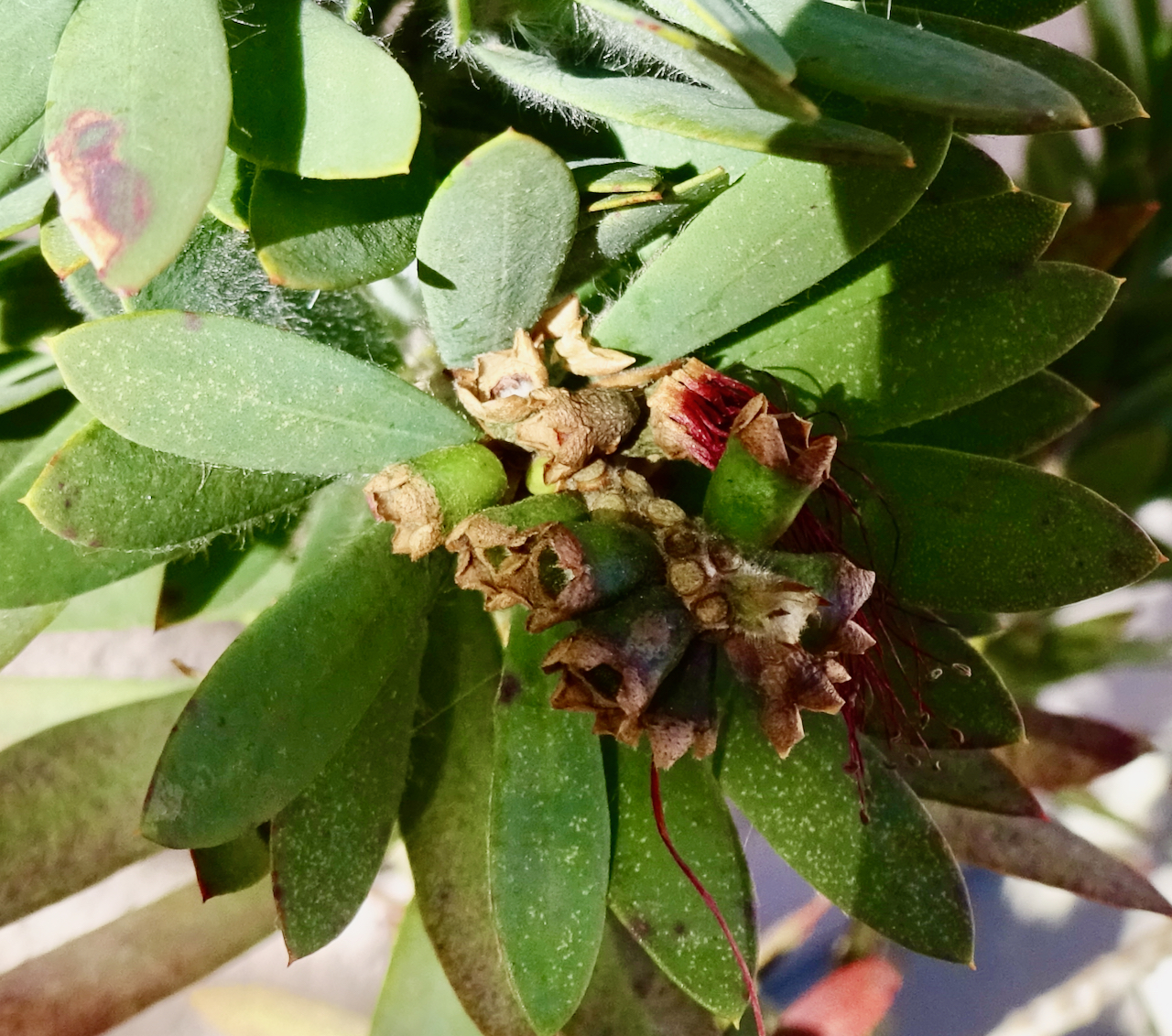Bottlebrush
Callistemon species
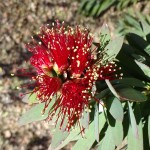
About the Plant
Bottlebrush are Australian natives grown for their showy cylindrical ("bottlebrush") flower clusters. Some species are shrubs or trees to about 30 feet high. Dwarf varieties that grow to only 2 feet or so are popular landscape plants in Arizona. All are evergreen. Start looking for flowers in early spring.
Grow bottlebrush in full sun on well-drained soil. Though drought-tolerant, these plants grow in moist soils in their native Australia. Make sure to water infrequently and deeply during the summer. Once a week is recommended by some, but watch out for leaf yellowing (chlorosis). It is an indication of overwatering.
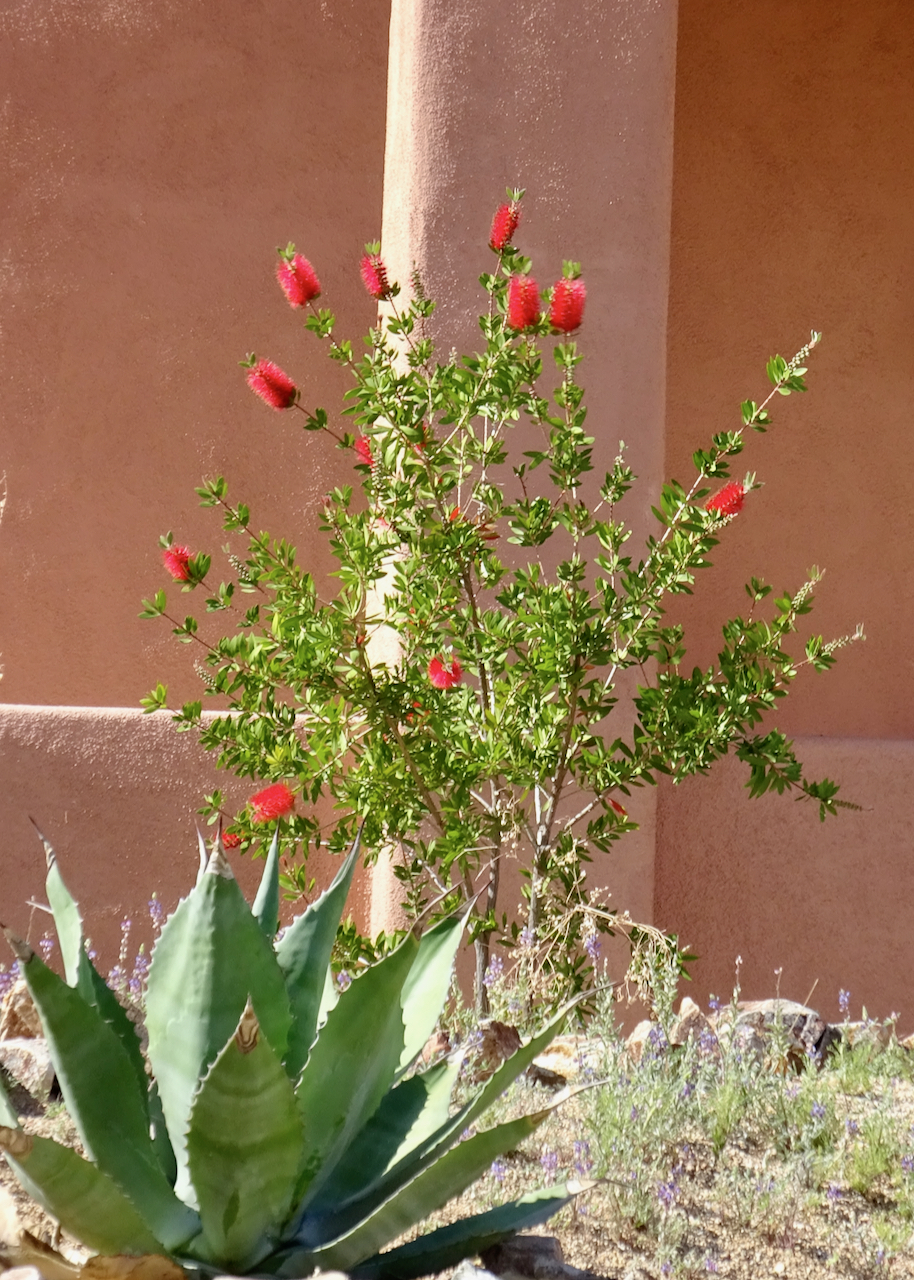
Prune larger plants into tree-forms by removing lower branches. Dwarf varieties naturally stay small but appearance can be improved by pruning just below each flower cluster as the blooms fade.
Notes:
- Before purchasing a bottlebrush for your yard, make sure to check that it is cold hardy in your area.
- Callistemon are very closely related to plants in the genus Melaleuca. Some botanist support transferring Callistemon species to Melaleuca.
Wildlife value: flowers attract bees and are somewhat attractive to hummingbirds
More Information:
Information on Callistemon viminalis from ASU (as Melaleuca viminalis)
Information from Australia:
ID Characteristics
This plant is in the Myrtaceae - the myrtle family.
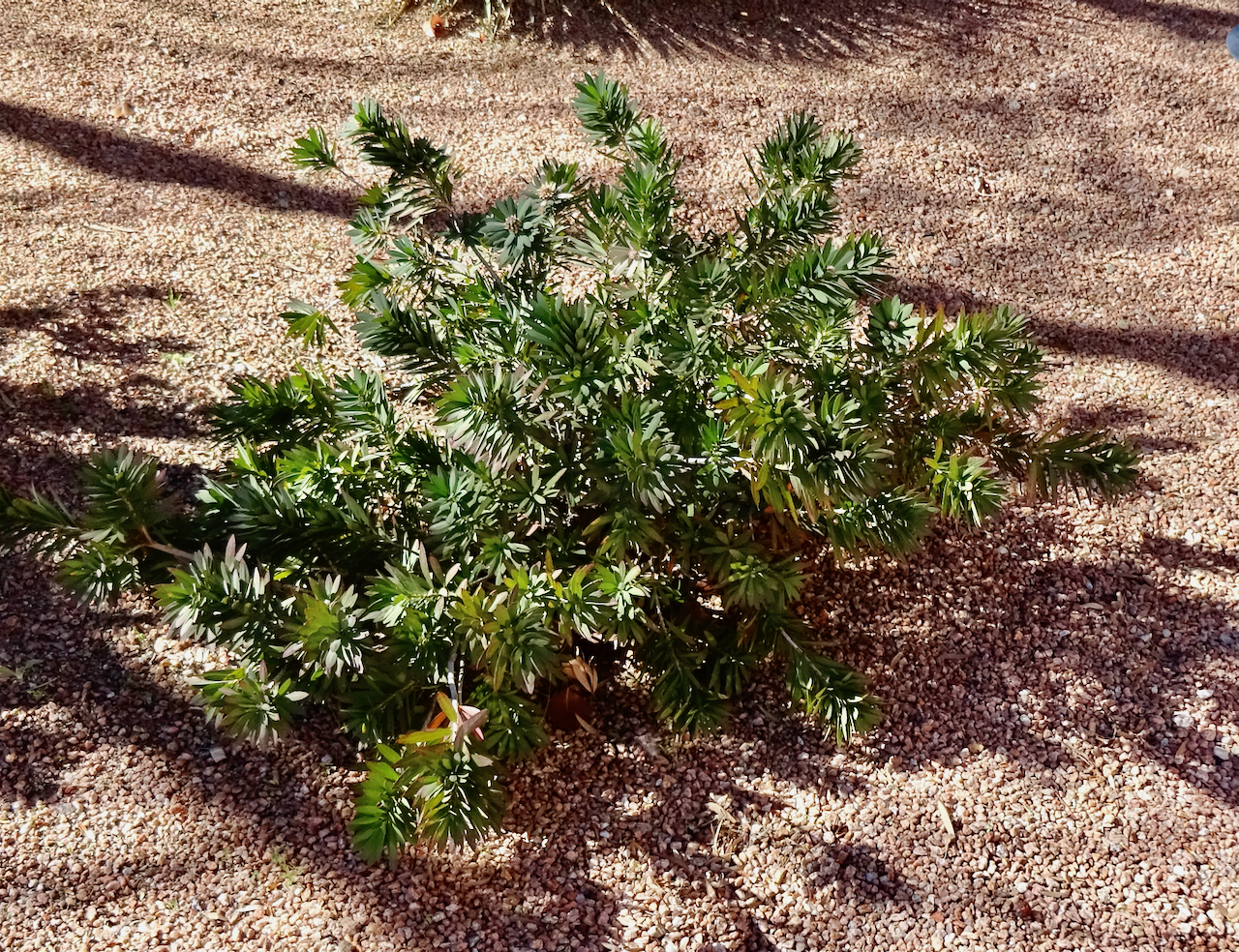 Dwarf bottlebrush are extremely popular. If you purchase one at a nursery, make sure to check the label for mature height and width.
Dwarf bottlebrush are extremely popular. If you purchase one at a nursery, make sure to check the label for mature height and width.
Photo shows leaves typical of dwarf varieties. Some tree-form bottlebrush have more weeping foliage and more linear leaves. All have alternate leaves. The bud in the center will form next season's flowers.
Bottlebrush flowers are arranged around the stem forming a cylinder. The sepals and petals are very small. The stamens have long, colored filaments (red in this example) ending in golden anthers.
The fruit at the base of the flowers is small and woody. Prune just behind the flowers to remove the unattractive fruit and to encourage branching and new growth.
